The Omega Seamaster Planet Ocean 600m Co‑Axial Master Chronometer 43.5mm Ref 215.30.44.21.01.001 is a great watch. But can it compare to the Rolex Sea-Dweller Ref 126600? Going by the spec sheet, some would say yes. Many would say no. In reality though, these are two very different watches. Likely to appeal to very different types of buyers. Most of whom will be loyal to one brand or the other. That’s not going to stop us comparing them side by side though. Check out our break-down below and tell us which is your favourite. You never know, you might even end up changing your mind.
A (Very) Brief History Of The Omega Planet Ocean And Rolex Sea-Dweller
The Rolex Sea-Dweller did not start out life as a commercial product. It was not designed for the masses. Instead, it was created to serve a specific audience. Professional deep-sea divers. People who spent long periods underwater using a technique called saturation diving.
The original concept was developed in conjunction with COMEX. The French company specialized in engineering and deep diving operations in the 1960s. At the time they needed a diving watch for their professional divers to use whilst working on deep sea oil rigs. One that wouldn’t be destroyed by the changes in atmospheric pressure that occur in diving bells.
Working with COMEX and Doxa S.A., Rolex developed and patented the helium escape valve. A one-way valve, it activates when the differential between the inner and the outside pressure reaches a critical level. This allows the helium and any other gases used in the breathing gas to be released from inside the watch case. A specific reference was created for COMEX (Submariner ref 5514.)
- The Rolex Sea Dweller Ref. 1665 for professional divers.
Following on from this, Rolex launched a new model fitted with helium escape valves. The Sea-Dweller Ref 1665 came to market in 1967. It was targeted at professional deep-sea divers. The initial model was water resistant to 2,000ft (610 meters), an impressive feat at the time. You can read more about the history of the Sea-Dweller here.
The Omega Seamaster Planet Ocean meanwhile didn’t arrive on the scene until 2005. Almost forty years later. And it was most definitely created for the commercial market. To be fair though, it wasn’t like Omega was starting from scratch. The design of the Planet Ocean is after all inspired by the Seamaster 300 Ref 165.024. A watch which made its debut in the mid-1960s.
- An OMEGA Seamaster 300 Ref 165.024 from the 1960’s. Image credit – A Collected Man.
The Ref 165.024 was part of the second-generation of Seamaster 300’s. Its case was a beefy 42mm and featured twisted lugs with polished and brushed sections. It also used an asymmetrical design with crown protection. This had been developed the previous year on the Speedmaster Professional for astronauts. But it is the bezel, hands and most of all dial of this model, that the Planet Ocean draws from.
Planet Ocean – The Early Days
I’m sure many people reading this will remember the first Planet Oceans. That’s because they had a distinctive orange aluminium bezel insert. Nowadays, a brightly coloured bezel wouldn’t warrant a second look. But back in 2005, this was ground-breaking stuff.
Omega’s line was that orange was one of the most visible colours underwater. A claim that was not necessarily backed up by evidence. But why let the facts get in the way of a good story, right? There was also a version with a black bezel. Much more akin to the model we’re looking at today.
Both models were offered in two different case sizes: 42mm x 14.5mm thick and 45.5mm x 17mm thick. Despite the thicker case on the larger version, both models were waterproof to 600m. And both feature a screw-down helium escape valve at 10 o’clock. Keep in mind this was right around the time oversized watches were gaining in popularity. Inside was the calibre 2500 movement. A modified ETA 2892-2 with co-axial escapement.
Over the years, Omega has extensively updated and evolved the Planet Ocean collection. A major milestone came in 2009. That’s when Omega debuted its new Liquidmetal ceramic bezel. Although it wasn’t overtly stated, this was Omega’s response to the Cerachrom bezel from Rolex. The latter having hit the market in 2005 on the GMT-Master II.
The James Bond Effect
By all accounts the Omega Planet Ocean was a hit from the start. Appearing in several James Bond movies didn’t hurt its popularity either. These include: Casino Royale (2006). Quantum of Solace (2008). And Skyfall (2012).
With each movie, Omega produced a 007-themed limited-edition Planet Ocean. My personal favourite is the Omega Seamaster Planet Ocean Skyfall ref. 232.30.42.21.01.004. (Pictured above). It comes in the smaller 42mm case and features a Liqiudmetal bezel. The chequered matte black dial features a subtle 007 logo at 7 o’clock.
Omega Planet Ocean vs Rolex Sea-Dweller
Case
The Planet Ocean is available in several case sizes depending on the model you choose. For the purposes of this article we will focus on the 43.5mm variation in steel. Ref 215.30.44.21.01.001 for those who like to get technical. It shows polished and brushed finishes and measures a robust 16.05mm thick. It’s rated water resistant to 600 metres / 2,000 feet.
The Sea-Dweller is a fraction smaller at 43mm x 15.5mm. Yet the Ref 126600 is water tight to 1,220m. Or more than double that of the Planet Ocean. This is thanks to the Oyster case, manufactured from corrosion-resistant 904L steel. The case construction uses a monobloc middle case and screw-down case back. The screw-down crown features Rolex’s patented Triplock triple waterproofness system. On the left side of the case is the integrated helium escape valve.
Bezel
Both models feature unidirectional black ceramic bezel inserts. The Planet Ocean uses OMEGA Liquidmetal™ for the diving scale. On the Sea-Dweller, the numerals and graduations on the bezel are coated with a thin layer of platinum. Both feature 1-minute markings from 0 all the way to 60. And an upside-down triangular marker with lume dot at 12 o’clock.
Dial
The Planet Ocean has always been intended as a luxury dive watch. Emphasis on the luxury. This really becomes apparent with the dial, which is made from Zr02 polished ceramic. (Hence the [Zr02] engraving near the middle of the dial). It takes the quality and finish up another level. You don’t need it on a professional dive watch. But I don’t hear anyone complaining.
The arrow-shaped hands are large and lume-filled. As are the Arabic numerals and baton markers. They stand out against the dial providing excellent legibility. Even underwater. There’s a lot of text on the dial, which some might find a bit gimmicky. The word “Seamaster” and the depth rating are in the collection’s trademark orange. At 3 o’clock is a date window.
The dial of the Sea-Dweller is more understated. Although not by much. There’s still a lot of text on the dial. With the word “Sea-Dweller” in red adding a touch of colour. A combination of baton markers, dots and an upside-down triangle serve as the hour markers. The hands are the classic Mercedes-style. The brand’s patented Chromalight delivers uniform luminosity for up to eight hours.
The Sea-Dweller also shows the date at 3 o’clock. It’s magnified by a cyclops for easy reading. This may or may not bother you depending on your aesthetic leaning. There’s no question it’s more legible than the date display on the Planet Ocean though.
Movement
It is here that the Planet Ocean distinguishes itself. Providing the power is the manufacture calibre 8900. This self-winding movement with Co-Axial escapement is certified as a Master Chronometer. This means it has been certified not once, but twice. Firstly, the movement must pass COSC testing to qualify as a chronometer. Then, and only then, can it be subject to the 8 rigorous tests set by METAS.
These extra tests include exposure to magnetic fields in a variety of settings. As a result, the movement is rated resistant to magnetic fields up to 15,000 gauss. METAS also sets stricter standards for accuracy than the COSC. To qualify, the movement must have rate accuracy of between 0 and +5 seconds per day. This is assessed in a series of varying positions and extreme temperatures. Omega even allows you to view the exact results of each test for your watch. All you need to do is enter your certificate number online.
- The Omega Calibre 8900
The movement features a free sprung-balance with silicon balance spring. Two barrels mounted in series deliver a 60-hour power reserve. A time zone function allows you to adjust the hour hand in one-hour increments. Useful if you’re travelling. Finishing is also nice. The rhodium-plated rotor and bridges show Geneva waves in arabesque. The blackened screws also look cool. And it’s all on display through the sapphire caseback.
The Rolex Sea-Dweller is no slouch in the movement department either. Inside is the new generation calibre 3235. This is the same movement used in the Rolex Datejust 41. It’s a self-winding mechanical movement developed and manufactured by Rolex. It boasts 14 patents in total, including the Chronergy escapement.
- The Rolex Calibre 3235
This escapement combines high energy efficiency with great dependability. Made of nickel-phosphorus, it is also insensitive to magnetic interference. New barrel architecture and superior efficiency means a power reserve of 70 hours. The 3235 carries the Superlative Chronometer certification redefined by Rolex in 2015. This means it has chronometer certification by the COSC. And has then undergone more tests performed by Rolex after casing. Rate accuracy −2/+2 seconds per day.
Rolex is less forthcoming than Omega about the extra testing performed. It’s not clear what the actual tests are. Or the results of each individual movement. All Rolex discloses is that it does a series of specific final controls. And that these are conducted in its own laboratories according to its own criteria. The company is renowned for its extremely high standards though. I don’t think anyone is questioning the rigour or authenticity of these tests.
For ease of comparison, I’ve put the key stats of each movement in the table below:
|
Omega Calibre 8900 |
Rolex Calibre 3235 |
|
| Manufacture Movement? |
Yes |
Yes |
| Frequency (vph) |
25,300 |
28,800 |
| Precision |
0 – 5+ seconds a day, after casing |
-2/+2 seconds a day, after casing |
| Power Reserve |
60 hours |
70 hours |
| Escapement |
Co-Axial |
Chronenergy |
| Certification |
Master Chronometer |
Superlative Chronometer |
| Warranty |
5-year international guarantee |
5-year international guarantee |
Most people I’ve spoken to still give the edge to the 3235. It’s easier to service. And that little bit more accurate. When you take price into consideration though, it does changes things a little. But we’ll get to that.
Bracelet
The Planet Ocean comes on an integrated steel three-link bracelet. It’s equipped with a patented extendable foldover clasp for wearing over a wetsuit. It’s comfortable on the wrist and looks nice. But it’s not quite at the same standard as the Rolex alternative.
To be fair though, the solid-link Oyster bracelet is legendary. It’s considered one of the best steel bracelets in the business. A double extension system allows adjustments to be made without the use of tools. This means the watch can be worn comfortably over a diving suit up to 7 mm thick. The Fliplock extension link extends the bracelet by 26 mm.
For day to day wear with a normal suit, the Rolex Glidelock system allows fine adjustment of the bracelet length. Adjustments can be made in 2mm increments for a total of approximately 20 mm.
Price And Availability
This is where things get interesting. The retail price of the Omega Seamaster Planet Ocean 600m Co‑Axial Master Chronometer 43.5mm is USD 6,550. The Rolex Sea-Dweller Ref 126600 meanwhile retails for USD 11,350. Almost double the price.
There are also dozens of variations of the Planet Ocean available. Any one of which you can buy right now. The Sea-Dweller meanwhile has a lengthy waiting list. This reflects in the pricing of both on the secondary market.
The Planet Ocean can be had for a discount of around USD 4,500 preowned. It won’t appreciate in value but it will deliver a solid wearing experience. The Sea-Dweller meanwhile is currently trading at around USD 14,500. That figure is more than likely to go up.
Does The Planet Ocean Compare To The Sea-Dweller?
I think so. As a watch the Sea-Dweller is superior in about every way. But I don’t think you’re getting double the amount of value. Even though it’s almost double the price. The Planet Ocean is a great option, especially preowned. It’s well made. It’s reliable. And it looks good. Plus, it’s not like Omega is some fly-by-night operator. This is a serious brand with some serious heritage. Not to mention state-of-the-art manufacturing facilities.
I can’t say the Planet Ocean is better than the Sea-Dweller. But it definitely holds its own.
Technical Specifications: Omega Seamaster Planet Ocean 600m Co‑Axial Master Chronometer 43.5mm Ref 215.30.44.21.01.001
- Case: 43.5mm diameter – stainless steel case, polished and brushed – helium escape valve at 10 o’clock – unidirectional diving bezel in black ZrO2 ceramic, liquid ceramic and Super-LumiNova 60-minute scale – sapphire crystals front and caseback – 600m water-resistant.
- Dial: Black polished ZrO2 ceramic dial – applied indexes and hands filled with Super-LumiNova – Arabic numerals in varnished white.
- Movement: Omega calibre 8900, in-house – Master Chronometer certified – automatic with central rotor – 29mm diameter – co-axial escapement with anti-magnetic parts resistant up to 15,000 Gauss – 25,200 vibrations/hour – 60-hour power reserve with double barrel – 39 jewels – hours, minutes, seconds, date.
- Price: USD 6,550.
Technical Specifications: Rolex Sea-Dweller Single Red Ref 126600
- Case: Oyster – 43 mm – Oystersteel – monobloc middle case, screw-down case back and crown with Triplock triple waterproofness system – Unidirectional rotatable 60-minute graduated, scratch-resistant Cerachrom insert in ceramic, numerals and graduations coated in platinum – waterproof to 1,220 metres / 4,000 feet.
- Dial: Black – scratch-resistant sapphire, Cyclops lens over the date – centre hour, minute and seconds hands – instantaneous date – stop-seconds for precise time setting – Chromalight display with longlasting blue luminescence on hour markers and hands.
- Movement: Calibre 3235 – bidirectional self-winding via Perpetual rotor – paramagnetic blue Parachrom hairspring – Chronergy escapement with optimized energy efficiency – 70-hour power reserve – certified as Superlative Chronometer.
- Price: USD 11,350.
This article by TheWatchLounge has been sponsored by our partner WatchBox.
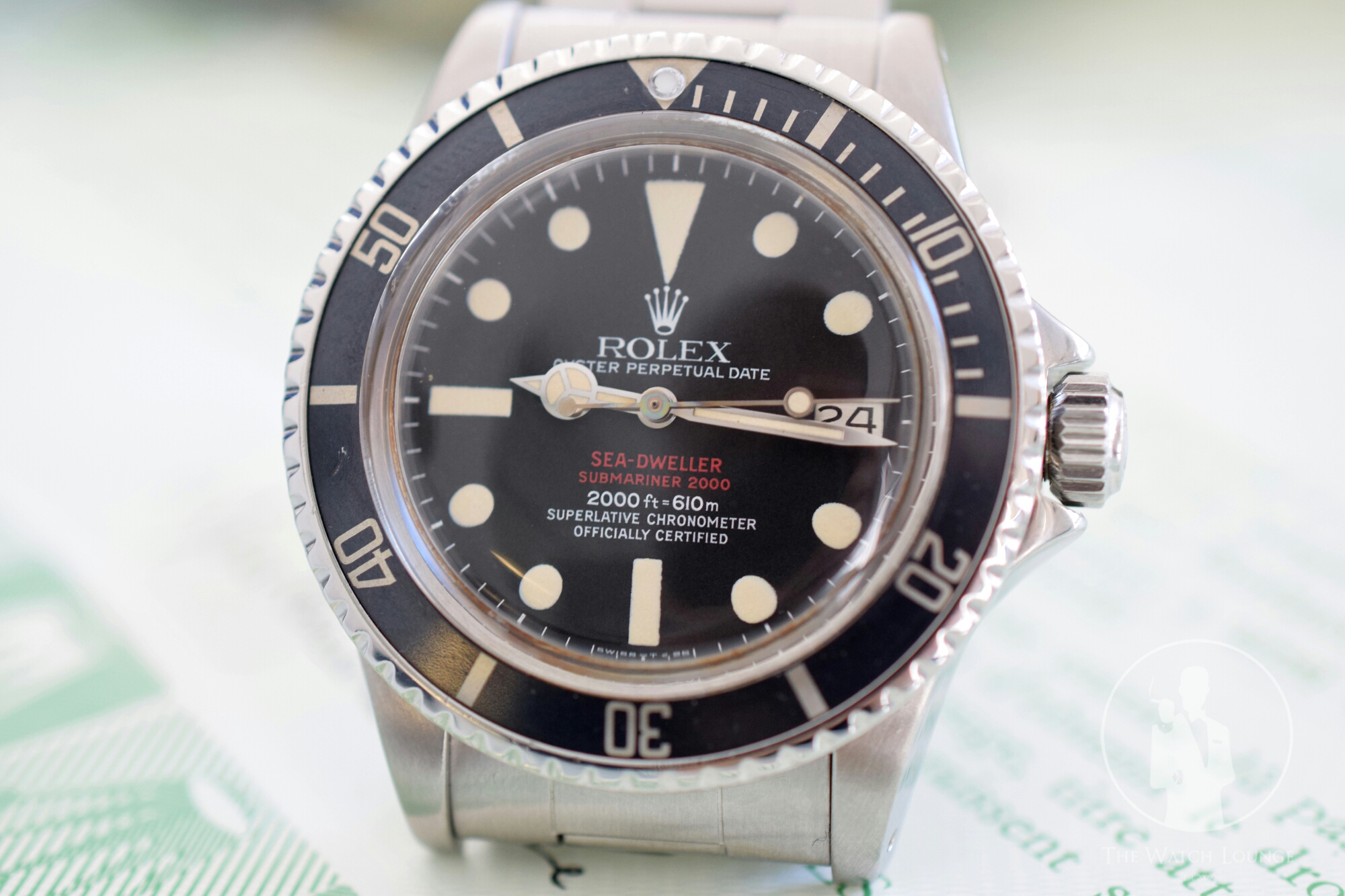
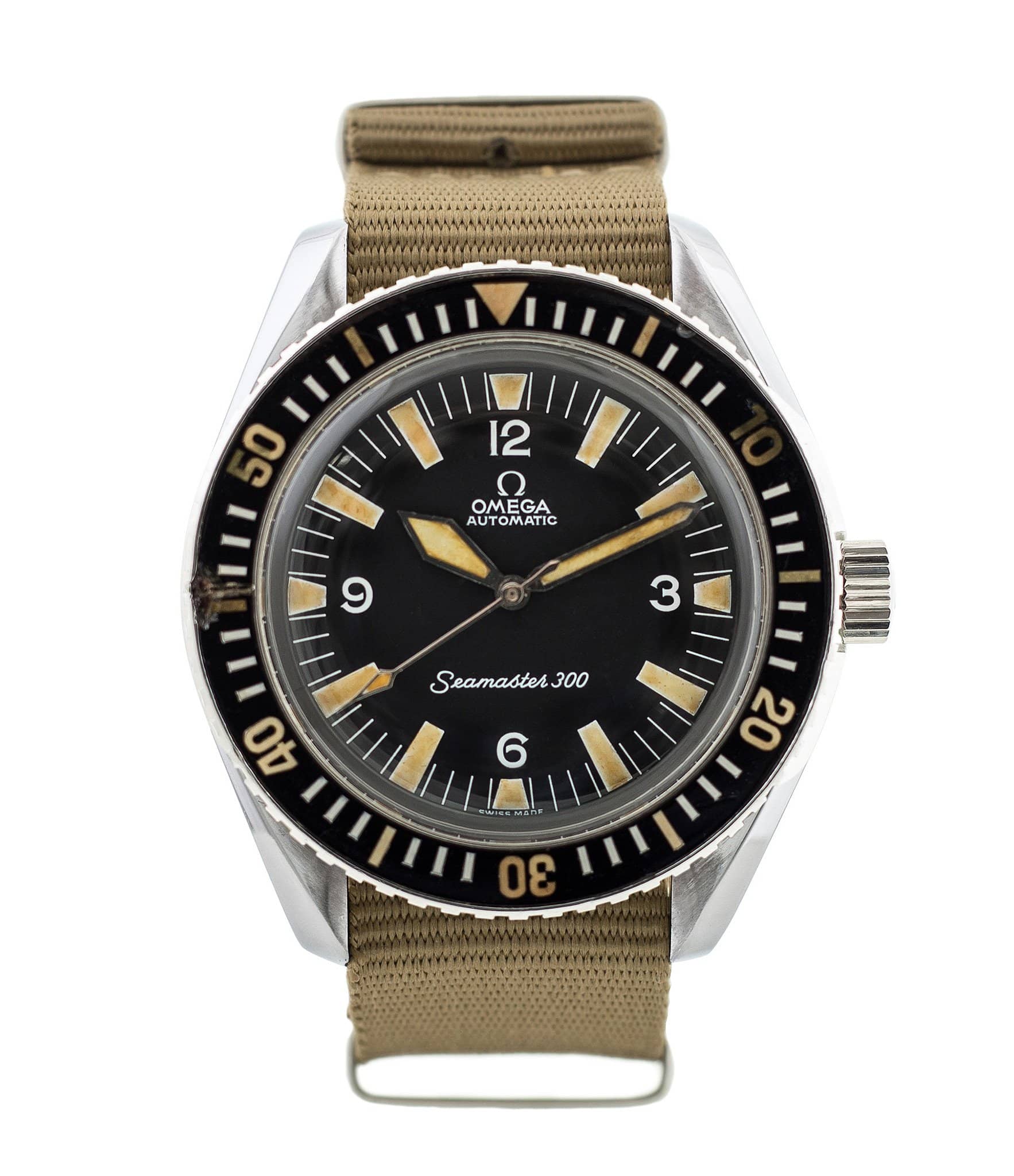
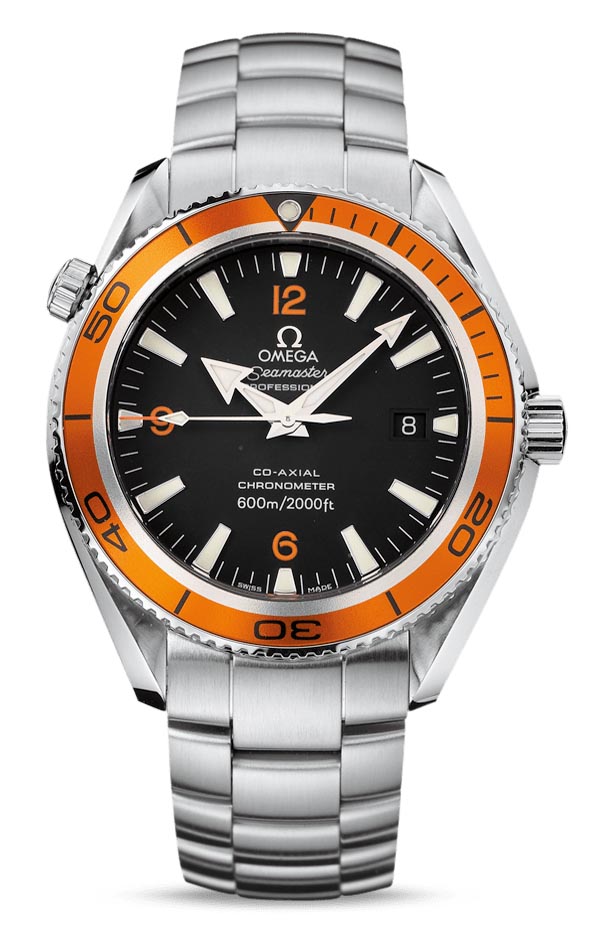
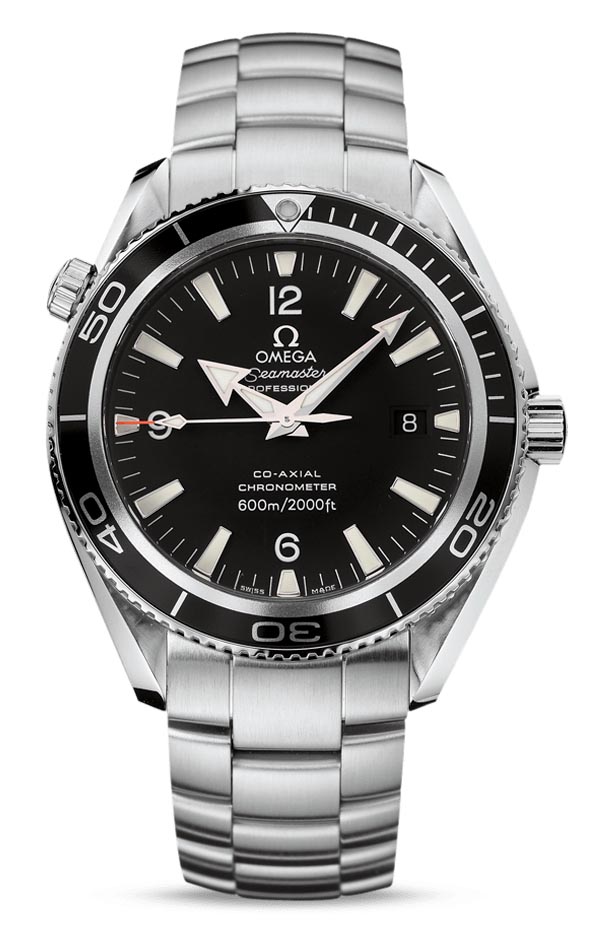
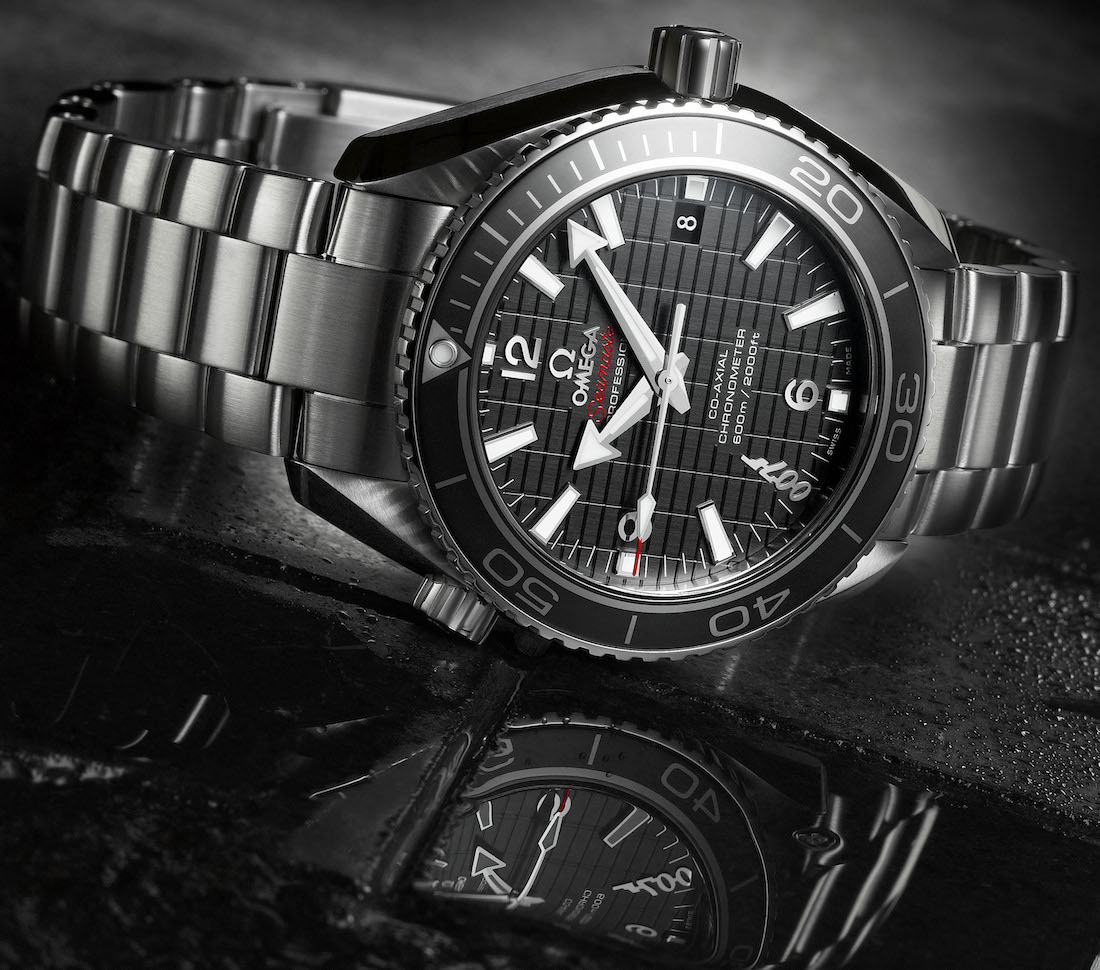
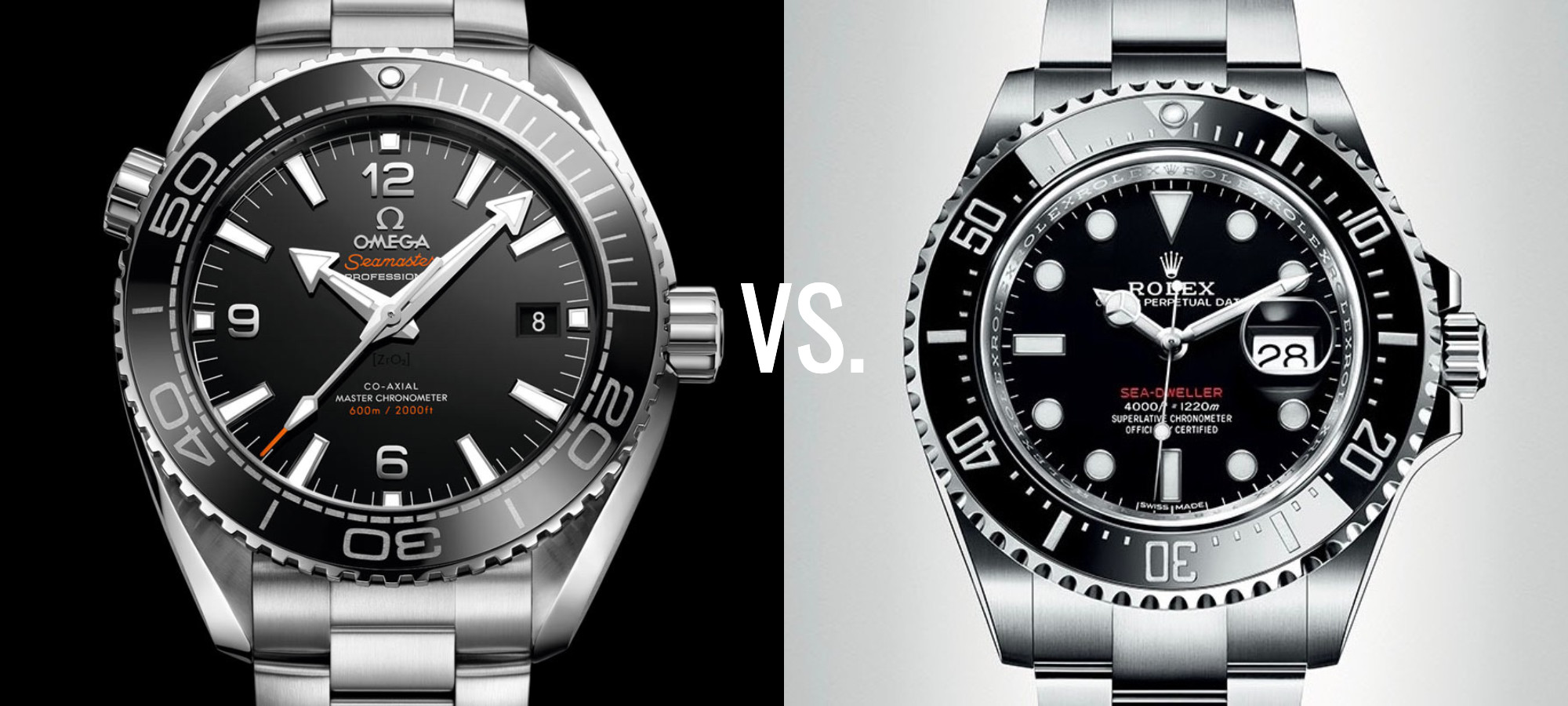
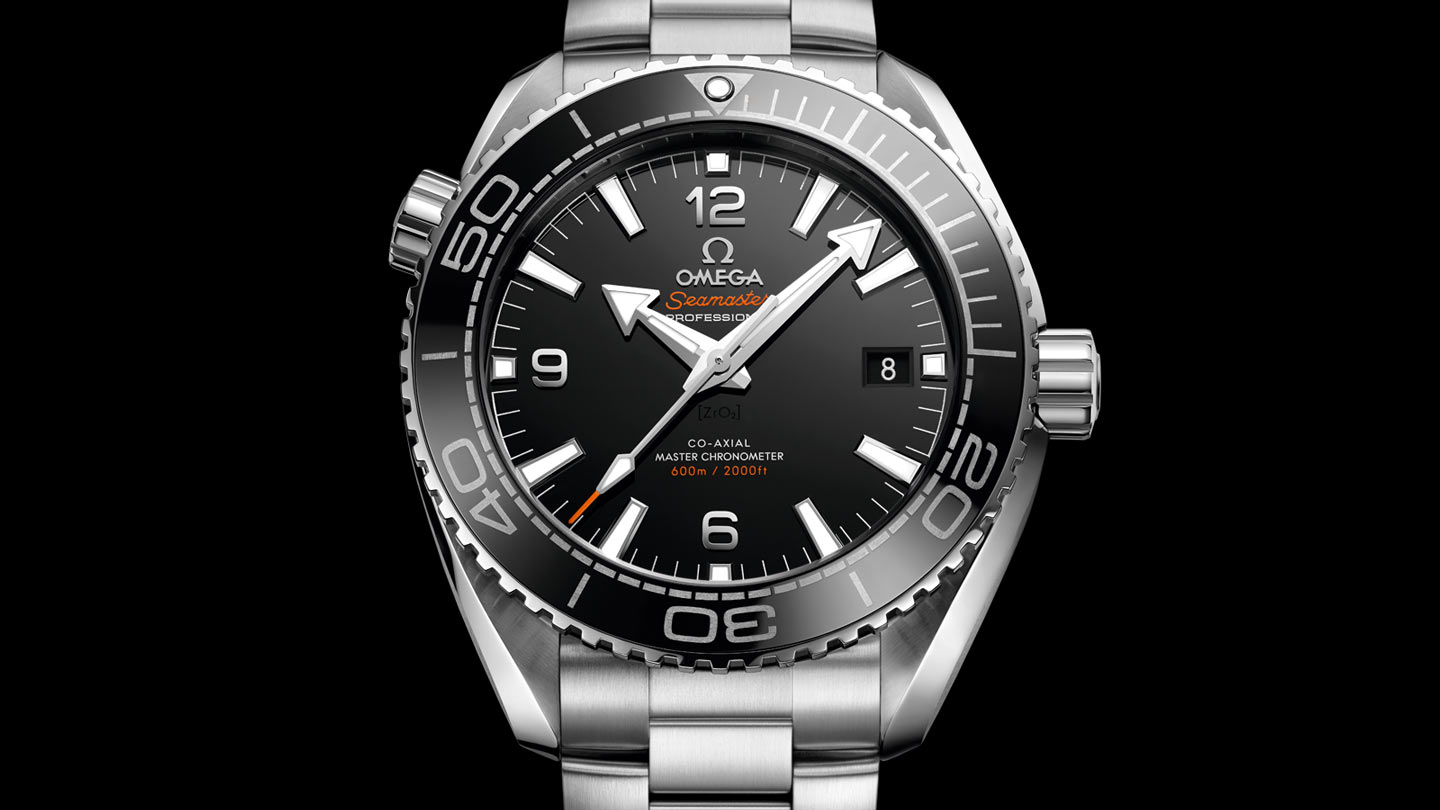
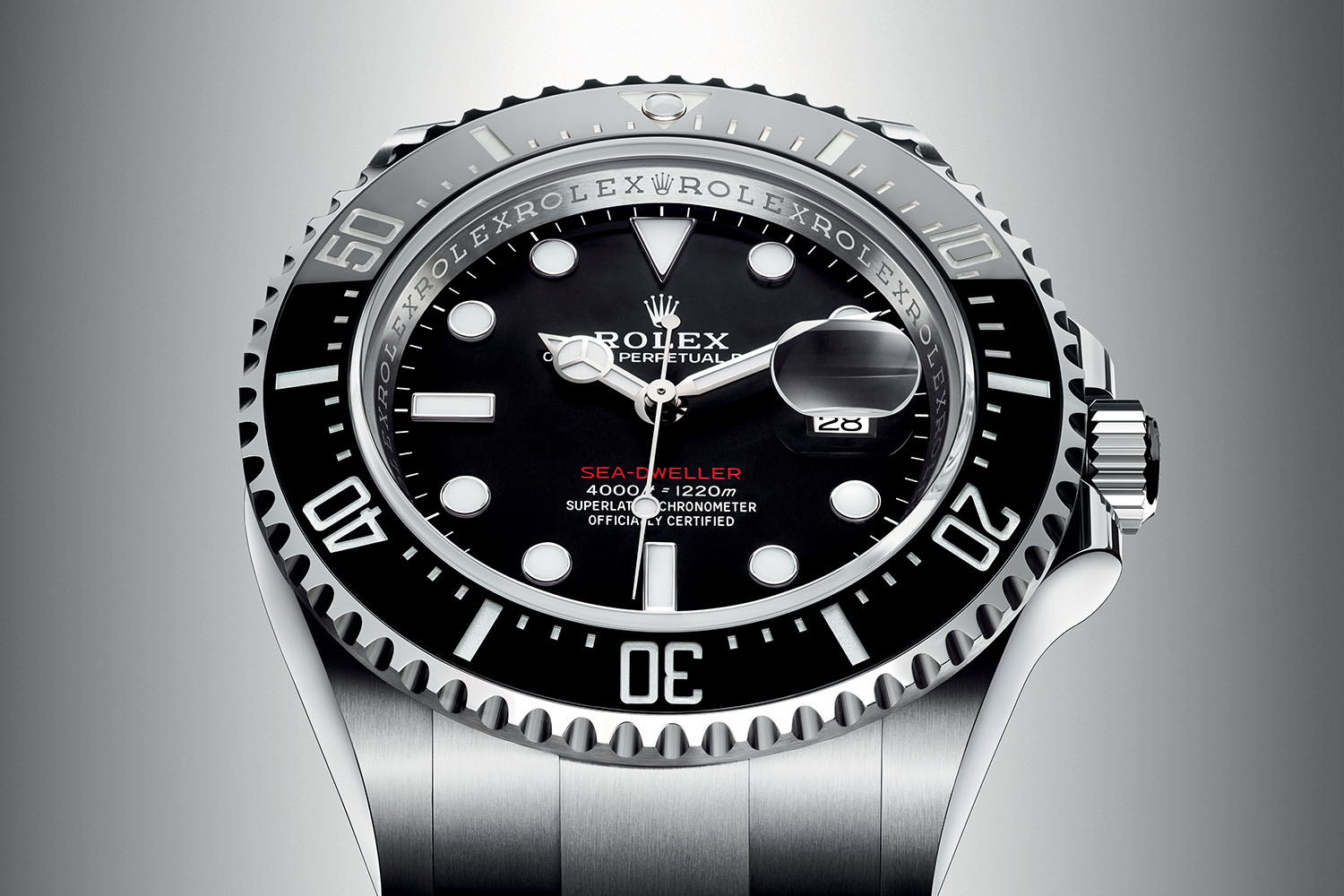
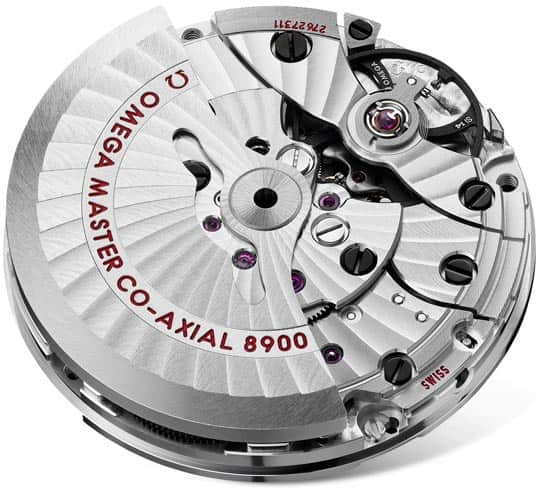
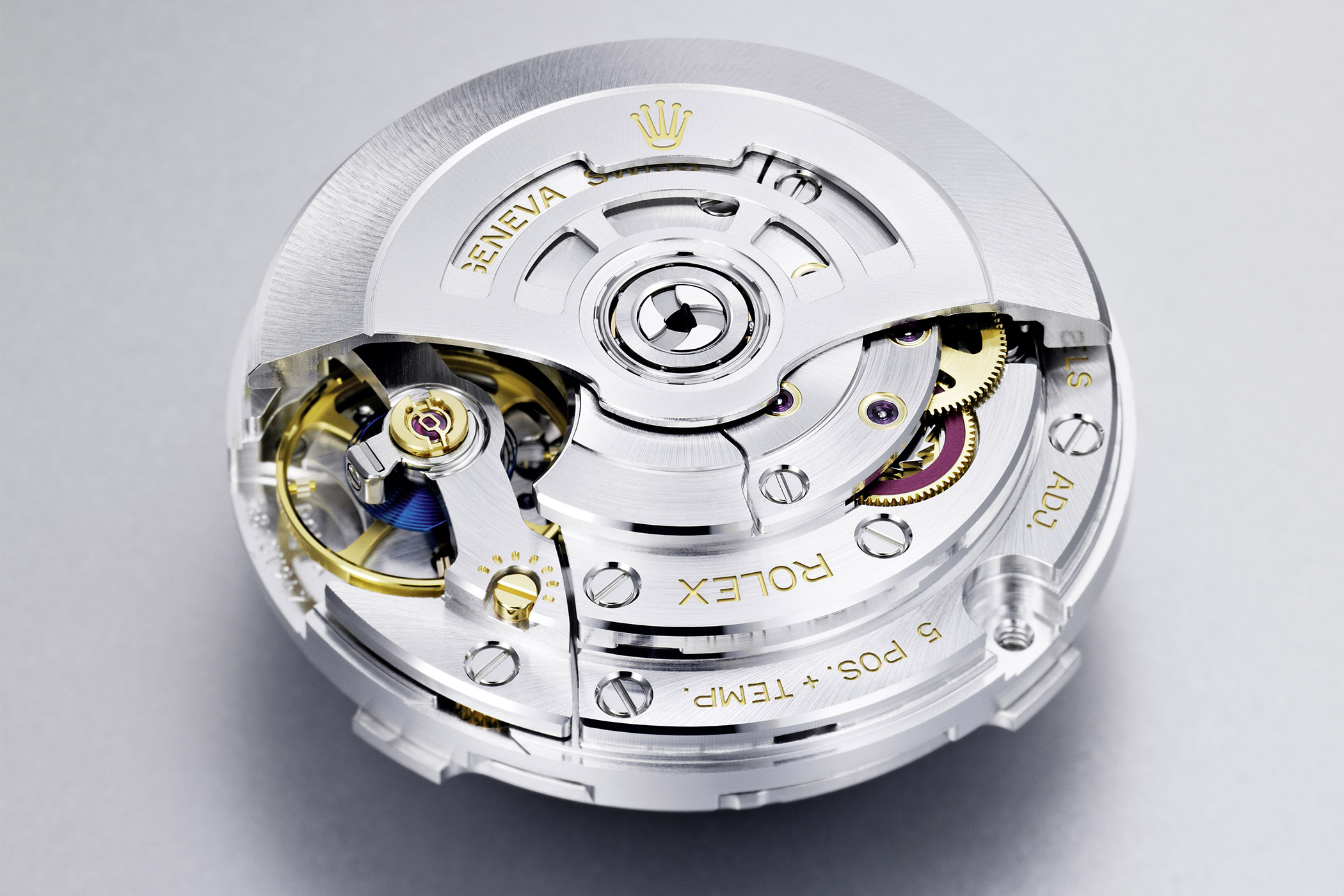
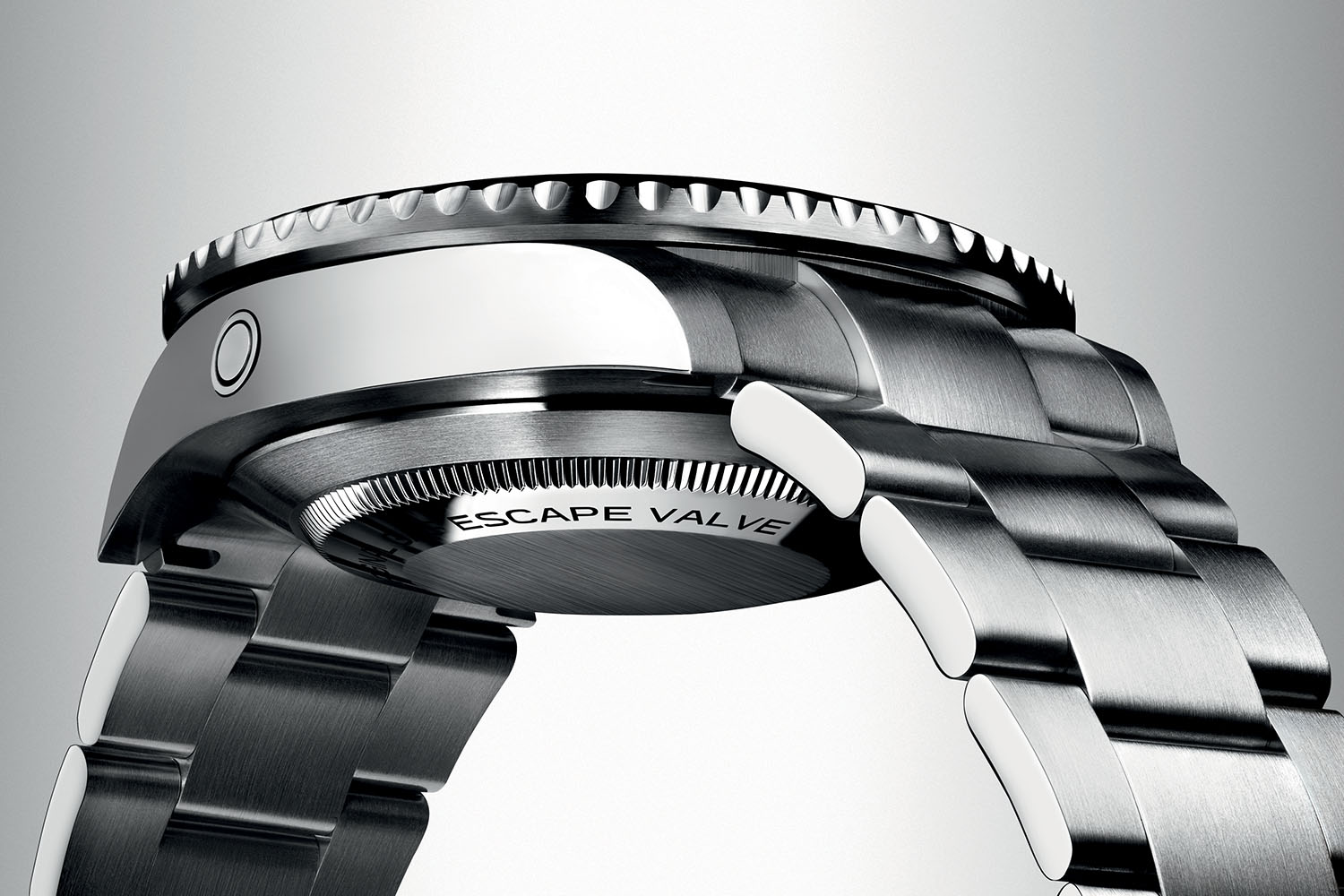
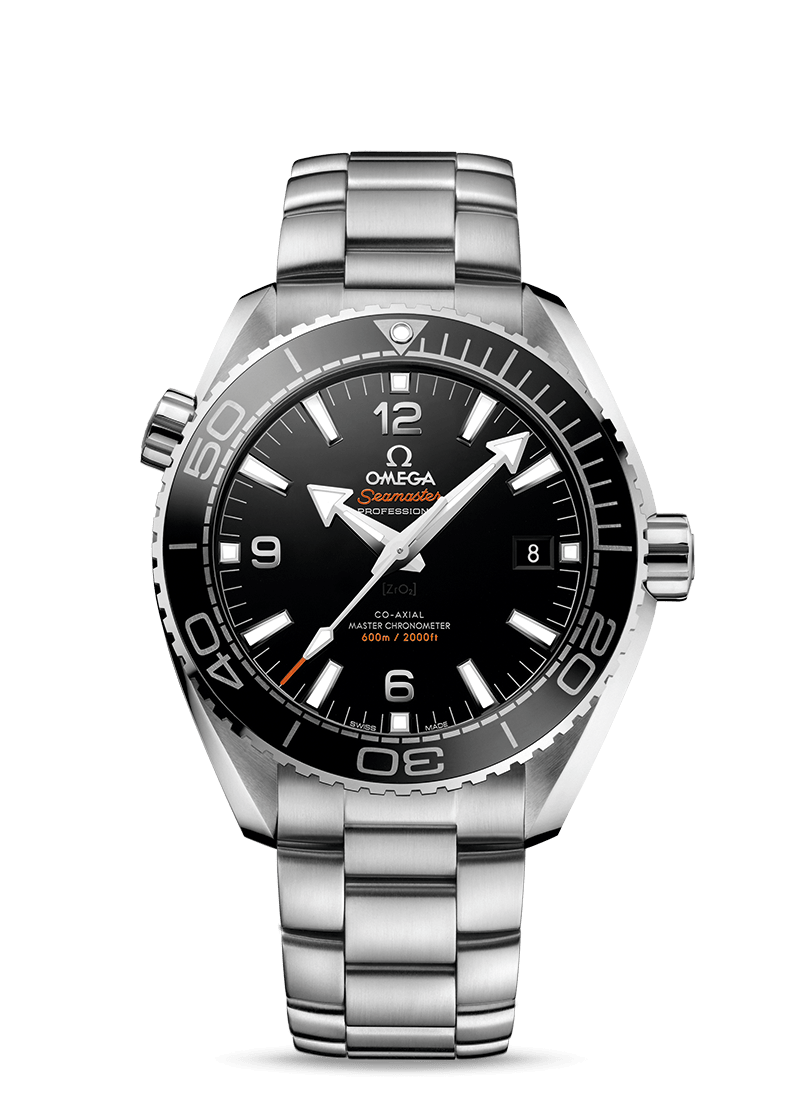
Nice review. I had the older version of the Sea-Dweller (without the cyclops) which I found a bit high for its size, bit like a hockey puck. The new one is a better size but I’m not a fan of the cyclops. I have had the PO for a year now and its a superb watch. I prefer its looks to the Rolex. Can’t go wrong with either watch but the price of the Rolex and its availability are problems. Admittedly it will hold its value far better.
It was very enjoyable to read Your fair and balanced review of two luxury brands and two great watches. I am fortunate enough to own both and enjoy each for their own attributes.
Just discovered your site and look forward to going more in depth with it.
My first serious watch purchase was the Planet Ocean, ref. 2201.50, caliber 2500d and I still own it. Very reliable, durable and, in my opinion, more pleasing to the eye than my Submariner. Only drawbacks, it’s a heavy watch and the case is thick; otherwise a great piece and an excellent value. Mine looks as good today as when it was brand new, almost 10 years ago.